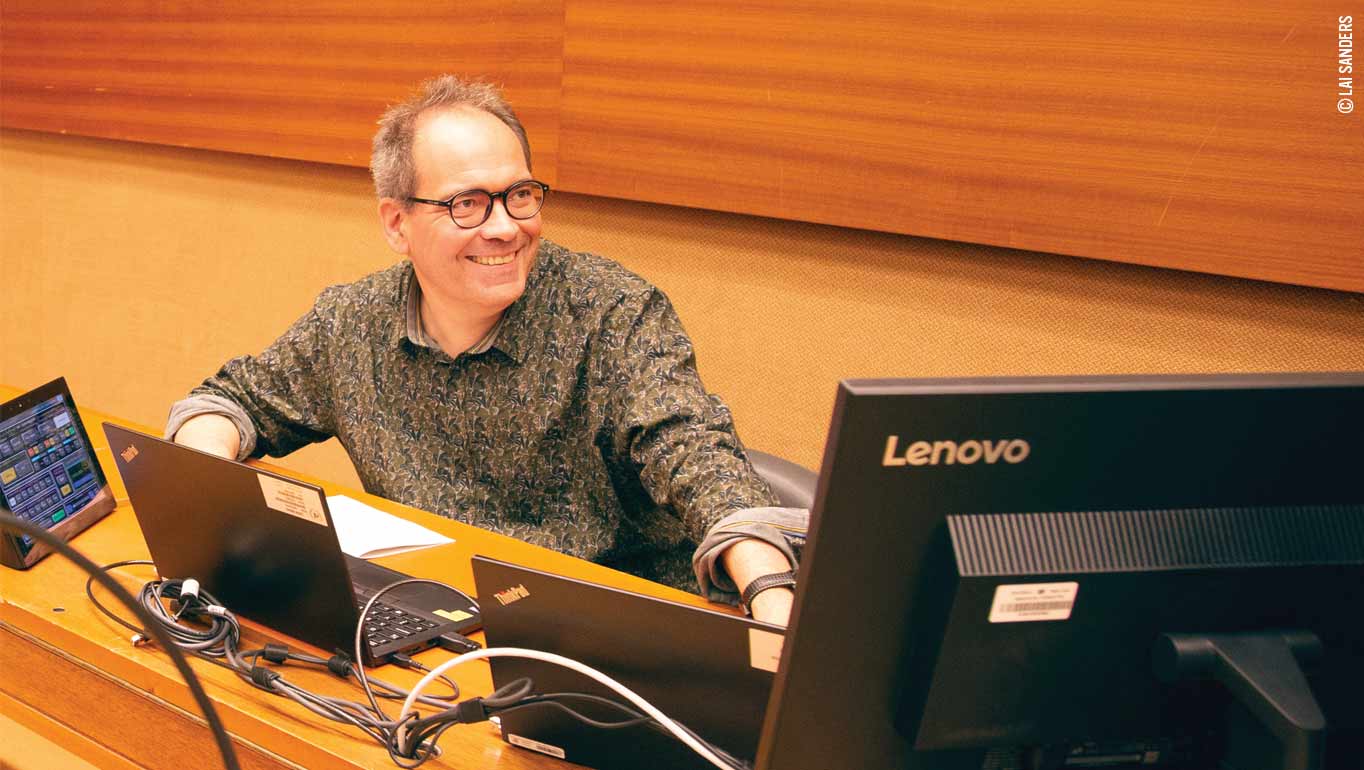UN Geneva is at the heart of the largest United Nations duty station and is one of the major conference centers in the world, making it a key platform for international dialogue and diplomacy. In 2020 alone, UNOG’s Division of Conference Management serviced 4,274 meetings! Indeed, during normal times this is far greater: as many as 12,371 meetings were serviced in 2019.
To ensure UN Geneva’s status as a hub for modern conferencing, our teams have driven forward innovations – adapting to present and future needs – through a renewed approach to working environments to suit the changing needs of clients and United Nations counterparts, while matching the acceleration of digital and communication technologies. At the forefront of these innovations has been the upgrade of technical equipment in the conference rooms.
Modernizing the Palais
Did you know the UN Geneva conference facilities were originally built 90 years ago? Of course, they have been renovated since! However, in the face of a rapidly changing world, teams have taken considerable effort to create more sustainable infrastructure, comprehensively modernize and renovate, all while ensuring business and operational continuity. As a result, facilities have been made safer, more accessible for persons with disabilities, more energy efficient, all with smarter space usage.
Central to this transition have been innovation and risk-taking, collaboration, client focus, process efficiency, working flexibly, and capacity building.
To suit digital transition, audio/visual changes and technical improvements
For their meetings and conferences, clients and users now have a more extensive choice of resources from our audio/visual services. Most important during the past months of business continuity is the possibility for remote participation in meetings via remote simultaneous interpretation (RSI) platforms, such as Zoom. High-tech screens and projectors are also on offer, along with smart-room PCs that provide technical control of the rooms for everything from lighting to sound, as well as internet connection (of course!) and other equipment. Interpretation in the six UN official languages is standard – depending on the conference entitlement.
Obsolete information and communication technology infrastructures in the largest rooms have been replaced with new technologies, while in the smaller rooms, microphones and interpretation systems remain the same, with the challenge of adapting these former technologies to today’s digital audio and camera control system. These interactive cameras capture speakers, or the full room, in high resolution, and can be shown on all screens in the room itself, the Palais, or on UN Web TV for broadcasted public meetings, allowing participants and observers to follow proceedings in detail, whether watching in-person or remotely. These screens also permit both live transcription and sign language interpretation.
New Rooms
To date, 16 rooms of UN Geneva now have state-of-the-art equipment that supports all meeting modalities, including hybrid. As a result, despite restraints on movement and social distancing, programs and mandates have continued with remote participation from stakeholders across the globe.
You may have noticed the new structure on our grounds: Tempus, or the Blue Bird Building. Since 2020, this temporary conferencing infrastructure has hosted up to three meetings at a time in its three fully equipped conference rooms. This summer, plans are underway to convert the three rooms into one large hall that can fit as many as 600 participants!
To suit changes, capacity building!
Adapting to the technical changes of the conference and meeting process has required dynamic capacity building. Various offices have collaborated to ensure our staff are up to date and capable of facilitating these finely tuned technical innovations. Unfortunately, a pernicious side effect of the digitalization of meeting participation has been the negative impact on sound quality. For this, focal points from interpretation and technical teams have joined forces to provide training for meeting participants and secretariat staff, sensitizing them to the safety needs and the procedural requirements surrounding sound transmission in an effort to improve sound quality for meetings (see related article).
What’s next?
The pandemic has accelerated the processes of digitalization, adaptation, and innovation. In 2020, 32% of meetings were held remotely. In 2021, UN Geneva held 54% of meetings with remote participation.
During this time, an in-depth study (Conferencing Today & Tomorrow – 2, Project Report, March 2022) was conducted in collaboration with a variety of stakeholders regarding the lessons learned and providing insight into how conferencing is likely to develop in the future. A unanimous agreement highlighted the importance of in-person meetings, especially for negotiations. There was also agreement on the benefits of hybrid meetings and remote participation, namely in facilitating wider and high-level participation, greater inclusivity, and reduced environmental impact.
The “Conferencing Today & Tomorrow – 2” report:
English version: ungeneva.org/en/ctt/report
French version: ungeneva.org/fr/ctt/rapport


